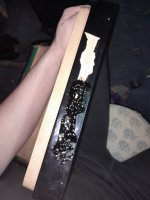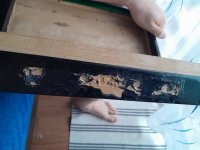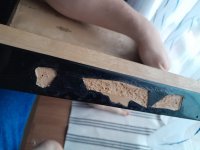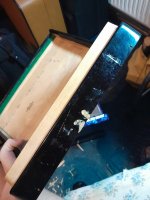jakubko123
Newbie
Hi guys!
I wanted to fix major missing celluloid area on my accordion, so i disolved some celluloid in acetone based liquid (diluent c 6000). Everything was looking great, celluloide disolved properly so i spread it on the accordion generously and i let it sit. After some time i saw that the acetone from celluloid mixture disolved the body of the accordion which is made out of some plastic i guess, and this disolved plastic came to the surface. I tried to cut out the plastic and repeat the proces but it does not work very well and the yellow plastic keeps leaking on the surface.
Here are photos 1. First spread 2. Plastic disolved 3. I cut certain parts and put another celluloid in the gaps 4. It keeps leaking!
Another problem is that even if i put a generous amount of celuloid in the gap, after the acetone evaporate it left only very thin layer of celluloid
Please send help thank you for your tips
thank you for your tips



I wanted to fix major missing celluloid area on my accordion, so i disolved some celluloid in acetone based liquid (diluent c 6000). Everything was looking great, celluloide disolved properly so i spread it on the accordion generously and i let it sit. After some time i saw that the acetone from celluloid mixture disolved the body of the accordion which is made out of some plastic i guess, and this disolved plastic came to the surface. I tried to cut out the plastic and repeat the proces but it does not work very well and the yellow plastic keeps leaking on the surface.
Here are photos 1. First spread 2. Plastic disolved 3. I cut certain parts and put another celluloid in the gaps 4. It keeps leaking!
Another problem is that even if i put a generous amount of celuloid in the gap, after the acetone evaporate it left only very thin layer of celluloid
Please send help





